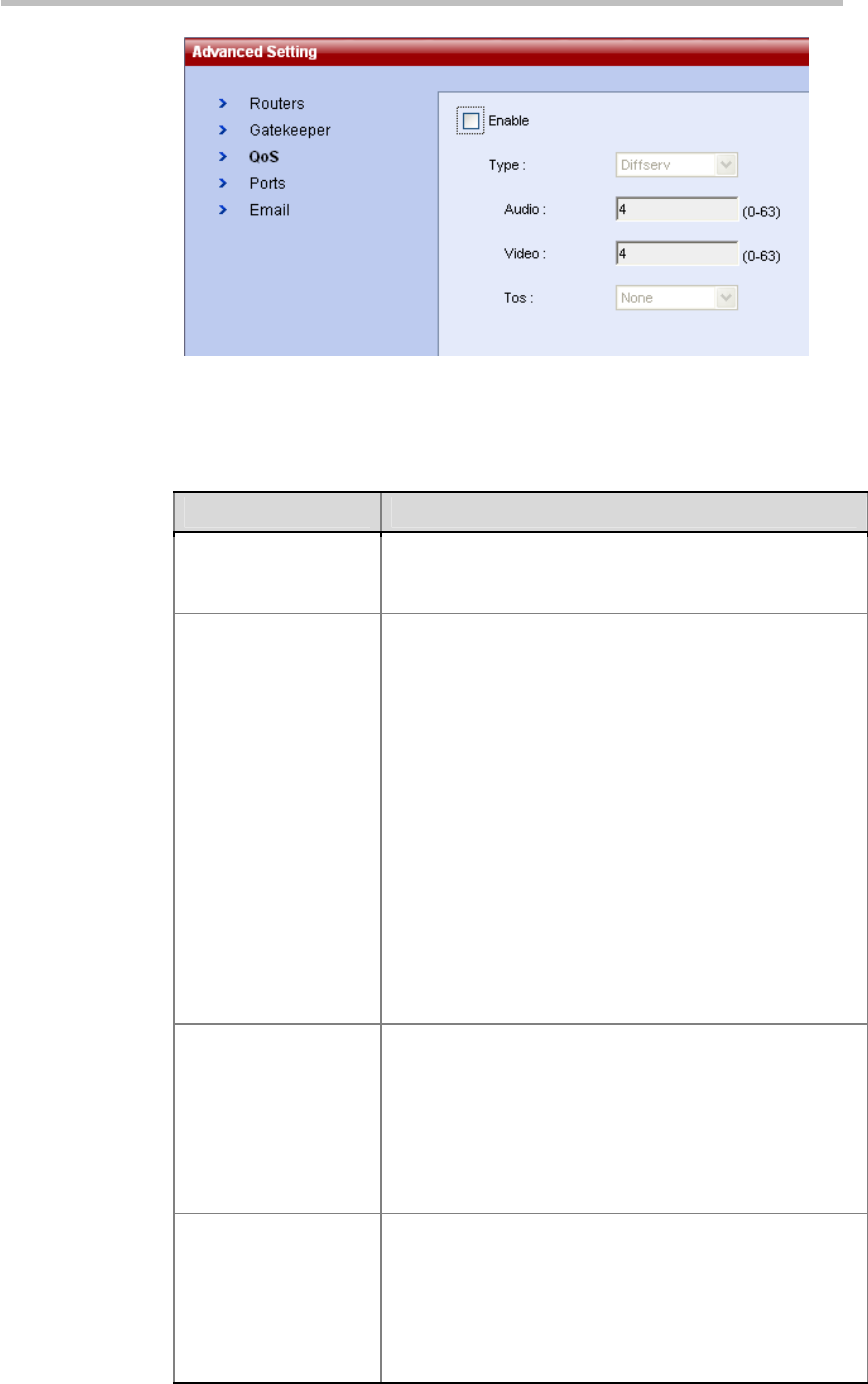
Chapter 11 -
11-6
Network Service
Figure 11-6 Advanced Setting - QoS
The table below explains the meanings for all QoS parameters.
Table 11-4 QoS Parameter Settings
Parameter Description
Enable
Select this option to enable configuration of the
QoS
settings. When un-checked, the system uses the default
QoS settings.
Type
DiffServ and Precedence
are two methods for encoding
packet priority. The priority set here for audio and video
packets should match the priority set in the network
routers.
Differv: Select when the network router uses Differv for
priority encoding.
Note:
If you select DiffServ but your router does not
support this standard, IP packets queue on the same
communication links with data packets. This non-prioritized
queueing greatly increases the latency and jitter in their
delivery and can negatively impact performance.
Precedence: Select when the network router uses
Precedence for priority encoding, or when you are not
sure which method is used by the router. Precedence
should be combined with None in the ToS field.
Note:
Precedence is the default mode as it is capable of
providing priority services to all types of routers and is
currently the most common mechanism.
Audio / Video
You can prioritize audio and video IP packets to ensure
that all participants in the conference hear and see each
other clearly. Select the desired priority. The scale is from 0
to 5, where 0 is the lowest priority and 5 is the highest.
The recommended priority is 4 for audio and video to
ensure that the Set as Default for both packet types is the
same, that audio and video packets are synchronized, and
to ensure lip sync.
Tos
Select the Type of Service (ToS) that defines optimization
tagging for routing the conference audio and video
packets.
Delay: The recommended default for video
conferencing; prioritized audio and video packets tagged
with this definition are delivered with minimal delay
None: No optimization definition is applied. This is a


















